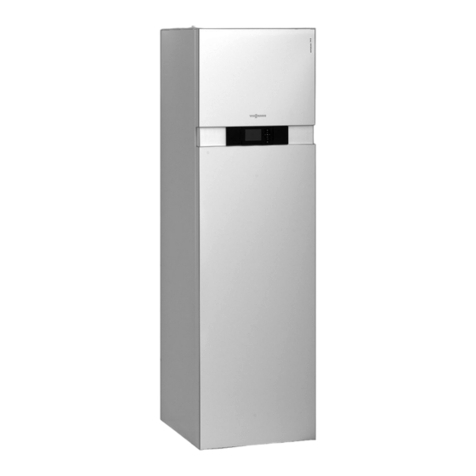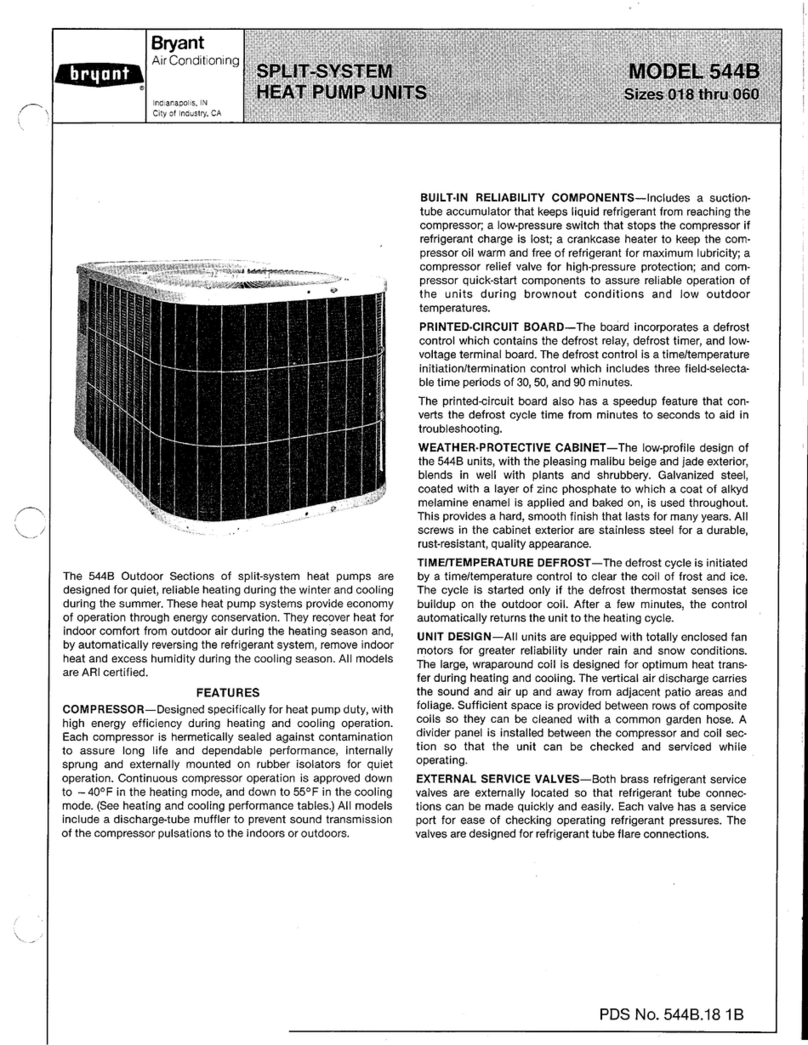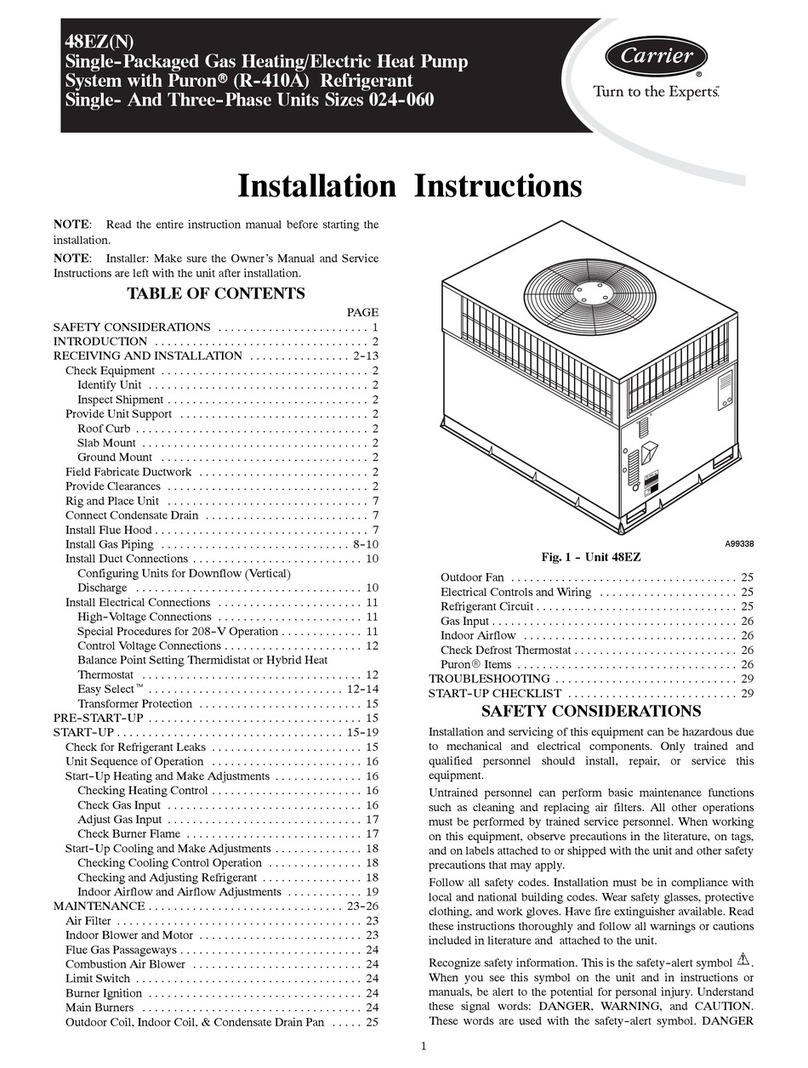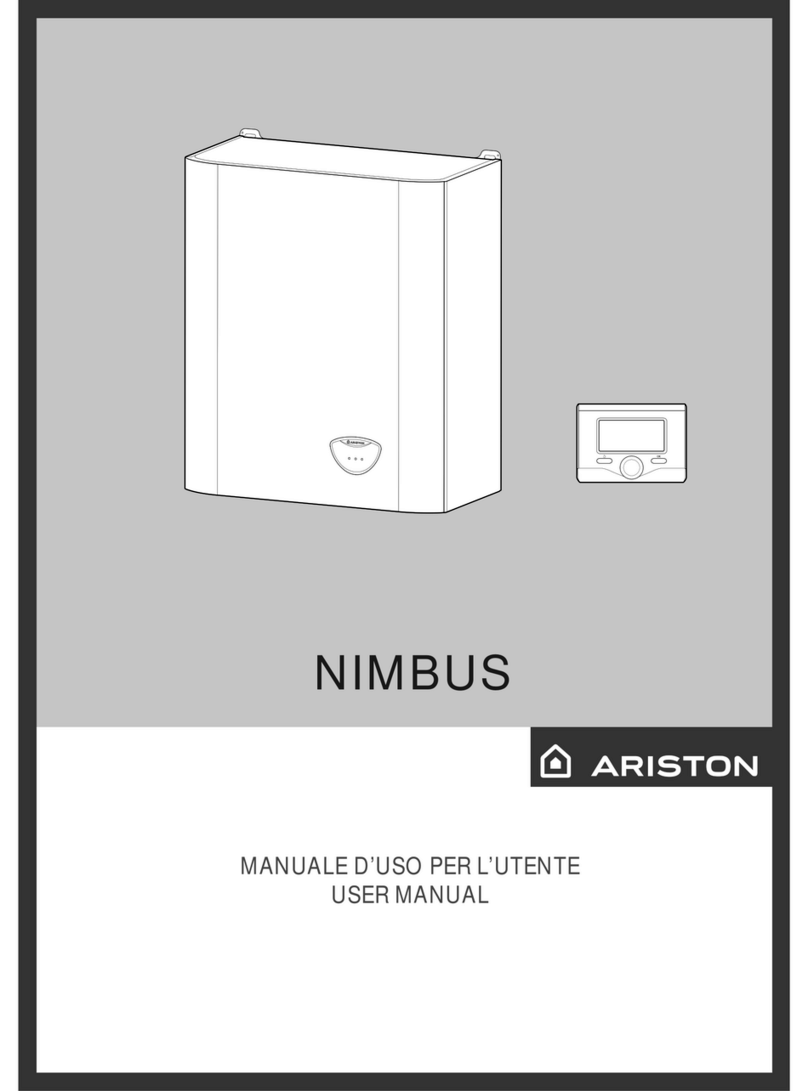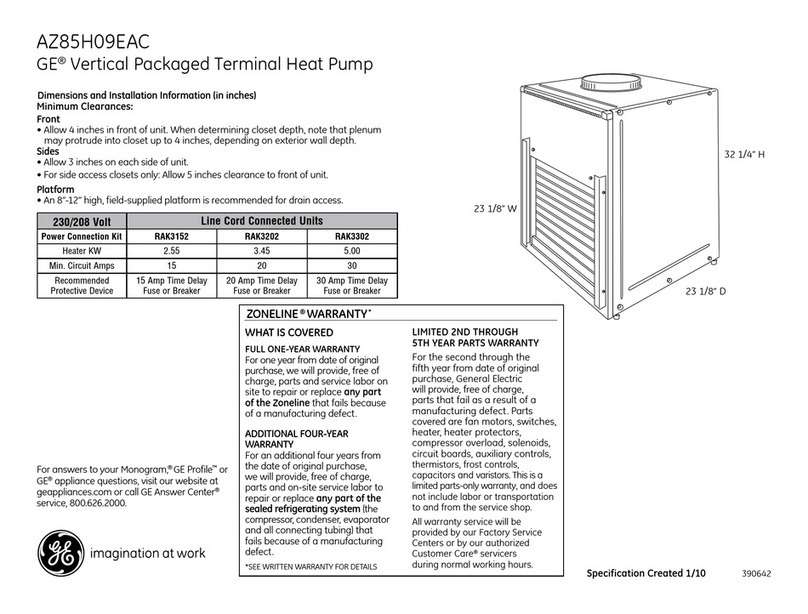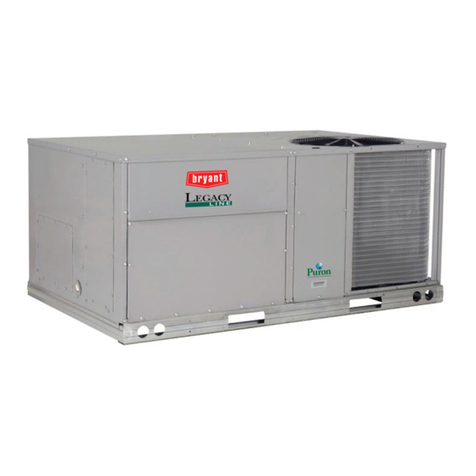
3
Safety instructions for working on the system
Working on the system
■Isolate the system from the power supply, e.g. by
removing the separate fuse or by means of a mains
isolator, and check that it is no longer live.
Note
In addition to the control circuit there may be several
power circuits.
Danger
Contact with live components can result in
severe injuries. Some components on PCBs
remain live even after the power supply has
been switched off.
Prior to removing covers from the appliances,
wait at least 4 minutes until the voltage has
completely dropped out.
■Safeguard the system against reconnection.
■Wear suitable personal protective equipment when
carrying out any work.
Danger
Hot surfaces can cause burns.
■Before maintenance and service work, switch
OFF the appliance and let it cool down.
■Never touch hot surfaces on the appliance, fit-
tings or pipework.
Danger
Risk of explosion: Electrostatic discharge can
cause sparks which may be ignited by escaping
refrigerant.
Prior to commencing work, touch earthed
objects such as heating or water pipes to dis-
charge static loads.
Danger
Risk of explosion: Electrical components can
cause sparks which may be ignited by escaping
refrigerant.
After every time the control panel is opened or
closed, check the casing door for vapour tight-
ness to EN 60079-15.
Danger
Risk of explosion: Escaping refrigerant can enter
the control panel along short electrical cables
(zone entrainment). In this case, vapour tight-
ness of the control panel is no longer ensured.
Do not trim existing cables.
!Please note
Electronic assemblies can be damaged by elec-
trostatic discharge.
Prior to commencing work, touch earthed
objects such as heating or water pipes to dis-
charge static loads.
Work on the refrigerant circuit
R290 refrigerant (propane) is an air displacing, colour-
less, flammable, odourless gas which forms explosive
mixtures with air.
Perform the following measures before beginning work
on the refrigerant circuit:
■Check refrigerant circuit for leaks.
■Ensure very good ventilation especially in the floor
area and sustain this for the duration of the work.
■Inform the following people about the nature of the
work to be carried out:
–All maintenance personnel
–Everyone who is present in the vicinity of the sys-
tem.
■Inspect the area immediately around the heat pump
for flammable materials and ignition sources:
Remove any flammable materials and ignition sour-
ces found.
■Cordon off the area around the ESyCool container.
■Before, during and after the work, check the sur-
rounding area for escaping refrigerant using an
explosion-proof refrigerant detector suitable for
R290.
This refrigerant detector must not generate any
sparks and must be sealed appropriately.
■In the following cases, a CO2 or powder fire extin-
guisher must be close at hand:
–When the system is being recharged with refriger-
ant.
–When soldering or welding work is being carried
out.
■Display signs prohibiting smoking.
Danger
Handling refrigerant can cause serious damage
to health. There is a risk of asphyxiation if it is
breathed in.
■Avoid direct contact with liquid refrigerant.
Wear personal protective equipment when
handling liquid gas.
■Never breathe in refrigerant vapours.
Danger
Escaping refrigerant can lead to explosions
resulting in extremely serious injury.
■Never drill into or ignite the refrigerant circuit.
■Take measures to prevent electrostatic
charge.
■Do not smoke. Prevent naked flames and
sparks. Never switch lights or electrical appli-
ances on or off.
Safety instructions
Safety instructions (cont.)
5800 917 GB







